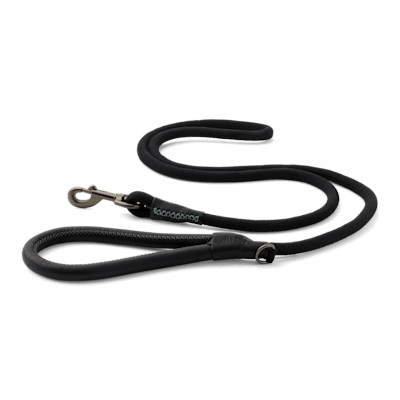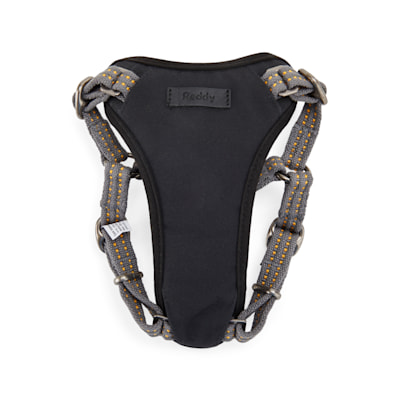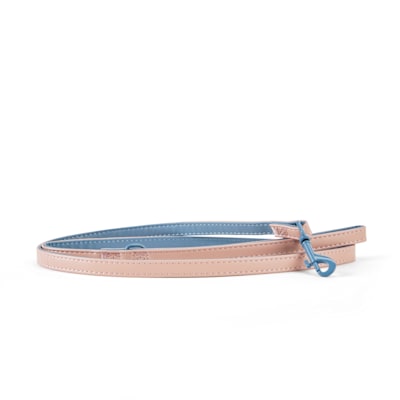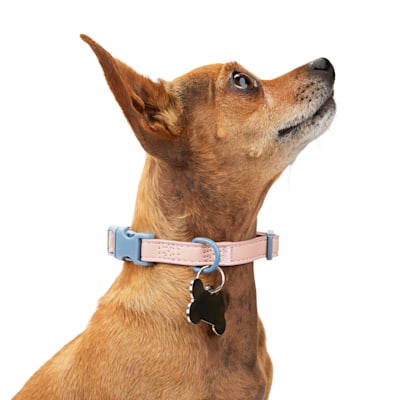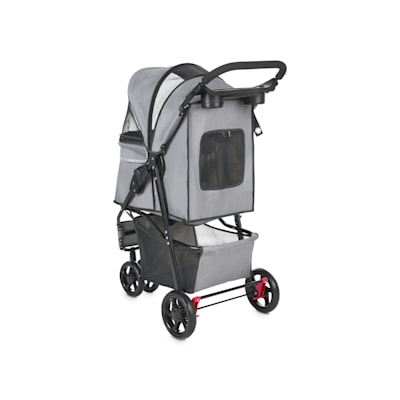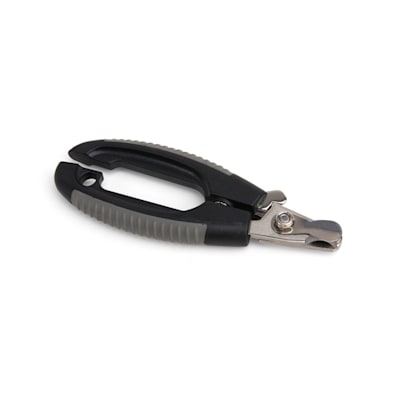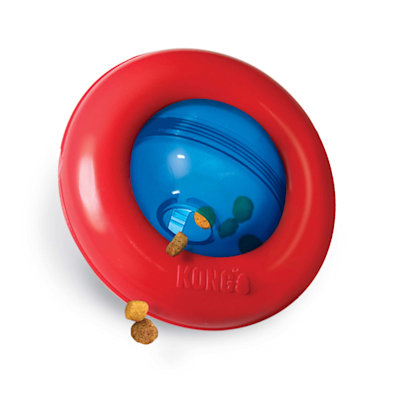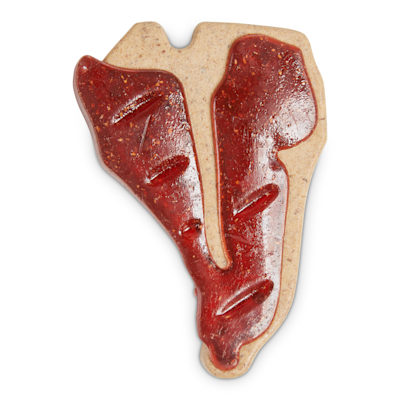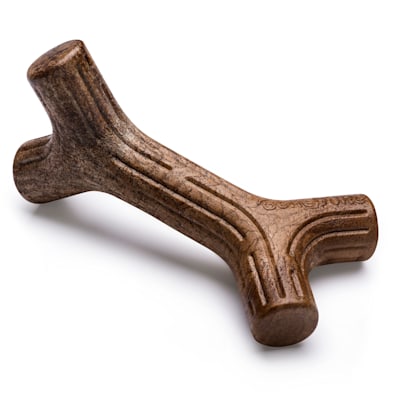
Beagle
The Beagle breed has long been a popular family companion around the world. Originally bred in Britain as hunting dogs, today these hounds are as valued for their spunky personalities as their keen noses and strong signaling barks. The quality of cooperation and teamwork that made Beagles good hunters’ helpers is now more commonly reflected in their role as enthusiastic participants in domestic life. Pet parents value Beagles for their loyalty, pluckiness and outgoing nature, as well as their playful enthusiasm when interacting with children.
Characteristics
Beagles are known for their compact size, floppy ears and expressive eyes. They’re equally renowned for their pack instincts, love of family life and outsized personalities. Beagles are typically great with kids and other dogs and thrive on attention and inclusion. Though Beagle’s characteristic hunting barks and howls make them a great living alarm system, they’re usually friendly and outgoing with both strangers and loved ones alike. Because Beagles are curious and energetic, frequent exercise is recommended, but strenuous activity isn’t necessary. Several brisk walks a day or backyard play sessions are usually sufficient for the fitness needs of a Beagle.
Height
Measured from the floor to the top of their shoulders when standing or sitting
13-15 inches
WEIGHT
Their average adult weight
18-30 lbs
LIFE EXPECTANCY
The average number of years they live
12-15 years
COLOR
Common fur colors
Black and tan; black, red and white; black, tan and bluetick; black, tan and white; black, white and tan; blue, tan and redtick; tan and white
GROUP
Their AKC classification based on heritage, traits, form and function
Hound
Size
LIVING SPACE
EXERCISE
PERSONALITY
BARKING
PROTECTION
BEHAVIOR WITH KIDS
TRAINING
SHEDDING
CLIMATE
Diet and nutrition
A Beagle typically benefits the most from a high-quality, commercially available dog food appropriate for their life stage. Dogs’ nutritional needs change throughout their life as they grow from developing puppies into active adults and finally into slower-paced seniors. Most Beagles should eat puppy food until they’re about 12 months old, at which point they can be switched to an adult formula. Your veterinarian may recommend a to senior dog food when your Beagle is around seven to nine years old.
When purchasing Beagle food, make sure to choose those with an AAFCO statement of nutritional adequacy displayed on the label. This certification ensures that a particular food has been carefully formulated to meet a dog’s dietary needs. Also pay attention to the life stage, lifestyle and dog size for which a food brand has been formulated. Even high-quality dog food can be the wrong choice for your Beagle if it doesn’t suit their age, activity level or other wellness factors.
Though there are many ways you can provide personalized care for your dog, commercially available dog food may be more beneficial than homemade. This is because reputable dog food manufacturers utilize ingredients and supplements—as well as scientific and veterinary supervision—that many pet parents may not have access to.
It’s important to pay attention to the amount of calories in any dog treats and chews offered—treats should make up no more than 10% of your Beagle’s diet. Only feed your Beagle the amount of food that will keep your pup slim but not overly skinny. Your dog’s age, size, activity level and other factors will determine the proper amount. Typically, overweight dogs or those with other health problems have unique nutritional needs. Your veterinarian can help you choose the right type and amount of food to give your dog and answer any other dietary questions you might have.
Recommended Beagle supplies
The curious, energetic Beagle temperament makes these dogs fun companions and valued family members. Though their hunting dog instincts and love of adventure may occasionally lead Beagles to headstrong behavior, there are some dog supplies that help Beagles and their families share a harmonious living space.
While Beagles don’t require rigorous exercise, they love to explore. You’ll likely spend plenty of quality time with your Beagle on walks, jogs or hikes. Properly fitted dog collars, leashes and harnesses can help keep your curious dog comfortably and safely close at hand. Remember, Beagles are hounds—they may become particularly excited about chasing small animals if they catch a scent.
Beagles are energetic, and if they don’t receive enough playtime, unchanneled enthusiasm can sometimes turn into destructive chewing. Toys and chews that reduce boredom and provide enrichment give your Beagle a far better alternative to your shoes and furniture. Dental treats can help remove plaque and tartar from your Beagle’s teeth and gums while also providing a good outlet for pent-up energy. Just make sure to select toys and chews appropriate for a Beagle’s size and life stage.
Because Beagles typically love to spend time outside, they are prime targets for bugs. One of the most important ways to protect your dog is through flea & tick solutions. Preventive care is key when it comes to parasitic pests, and it’s important to choose a flea & tick treatment that you’ll be able to stick with consistently. Our flea & tick options include appropriately sized collars and topical liquids that stop active infestations and help prevent future ones.
Another form of protection you can offer your dog—and your carpet—is protection from the elements. Booties and raincoats can help keep your adventurous dog warm and dry during outdoor excursions and avoid tracking mud and water onto your floors when it’s time to come inside.
Training your Beagle
The Beagle breed is highly favored in part due to their bright and expressive personalities, adventurous attitudes and love of being around other pets and people. These favorable traits can also create some unique challenges. Like many hounds, Beagles can be stubborn and their wide range of vocalizations can turn into excessive barking. Their need for companionship can also lead to separation anxiety if they’re left alone too long, which can result in destructive chewing.
All these issues are manageable with proper positive reinforcement Beagle training. You can learn to work with your dog’s breed-specific traits in a way that creates a trusting, loving bond between you and your dog. Effective communication and consistency will help your hound respond favorably to your cues.
Get an early start
Beagle puppies as young as eight weeks old can begin to learn basic cues, but you should keep your expectations realistic. Even if it’s a slow start, your puppy can learn to associate helpful cues such as “sit” and “stay” with specific behaviors. You can also start socializing your puppy with people and other pets to help them become comfortable and confident in their environment. Puppyhood is also a great time for your Beagle to begin learning when and where to go potty, as well as when and where it’s appropriate to bark. Since Beagles can be stubborn, you’ll appreciate getting an early start on teaching your pup how to be a considerate family member.
Curb boredom
Beagles were originally bred to hunt in packs, and most Beagles retain a strong affinity for pack life and adventure. If left alone for too long or not provided with outlets for their energy, Beagles can engage in destructive behaviors. Digging, chewing and other nervous habits can quickly make a mess of your yard, furniture and other belongings—and can also create safety hazards for your dog. Positive Beagle training should include teaching your pup which items are okay to chew on and which are not. Provide your dog with appropriate size and life stage chew toys for enrichment and boredom relief. Not only can curbing boredom help save your couch, but it will also help keep your pup alert, focused and more apt to respond to cues when it comes time for positive training sessions.
Balance the bark
Beagles are hounds—barking is simply a way of life for many in this group. From yips to bays to howls, Beagles use a full range of sounds to express themselves. This ability was once highly prized by hunters who relied on their Beagles to alert them to the presence of prey animals. Today, many pet parents find their Beagle’s vocalizations entertaining and take comfort in having their own little canine alarm system. To help your Beagle learn what times might not be appropriate to use their voice, it’s recommended to start positive reinforcement training early. Choose a word—like “hush” or “quiet”—as the cue for silence and reward your dog when they stop barking. Consistency is key to ensuring your pup understands how to respond to their cue.
Suggested Beagle training services
Whether you’re a first-time pet parent or a longtime dog lover, you may find that a little guidance goes a long way. At Petco, our personalized positive dog training options let you choose group or individual classes and lessons that can be joined either in person or online. You might find it beneficial to let our certified trainers guide you through positive reinforcement training methods to help teach your Beagle desired behaviors. Training is possible, and we’re here to help you.
Common Beagle health problems
Beagles are considered to be generally healthy dogs—but like any breed, they can experience certain health problems that occur at higher-than-average rates. For instance, Beagles tend to be energetic by nature and can develop weight problems if they don’t get enough exercise. And those long Beagle ears are cute, but they can also trap water, debris and bacteria inside the ear, leading to infections. Genetic conditions—such as hypothyroidism and hip dysplasia—affect Beagles at elevated rates. Before bringing home a Beagle, be sure to only work with reputable breeders and rescues willing to perform all the recommended Beagle health screenings and provide you with the results.
Periodontal disease is common among most canine breeds, especially as they get older, and Beagle dogs are no exception. A bacteria buildup can lead to infection and pain in the gums and teeth—and even tooth loss.
How to spot it
Visible buildup of plaque or tartar, red, swollen or bleeding gums and loose teeth are signs of your dog battling a dental disease.
Recommended Solutions
Prevention is the best treatment for periodontal disease, and daily tooth brushing is the most highly recommended form of prevention. If needed, your veterinarian may recommend a more involved form of dental prophylaxis.
Slender dogs tend to live longer, healthier lives—unfortunately, Beagles have a tendency to become overweight. Excess weight can put pressure on joints and affect the lungs, heart and other organs.
How to spot it
You’ll probably notice if your Beagle’s weight rises. If your dog becomes visibly heavier or it’s hard to feel their ribs, they may be overweight.
Recommended Solutions
Talk to your veterinarian if you have trouble keeping your Beagle slim. They may recommend a special diet or an exercise regimen for your dog.
Ear infections are relatively common in Beagles. The long ear flaps of this breed can trap water, germs and irritants inside, which can encourage the development of infections.
How to spot it
Redness, swelling or discharge in or around the ears could be a sign of infection. Pay attention if your Beagle scratches their ears with their paws or rubs them against other surfaces.
Recommended Solutions
Check your dog’s ears at least once a week for signs of infection. Clean them regularly with a cotton pad and a canine ear-cleaning solution if your veterinarian recommends you do so.
Beagles have an above-average chance of developing hypothyroidism, a disease typically caused by a dog’s immune system attacking and destroying the cells that produce thyroid hormones. This leads to impaired thyroid function.
How to spot it
Symptoms such as weight gain, lethargy, cold intolerance and recurring skin problems could signify that your dog has hypothyroidism.
Recommended Solutions
If your dog’s thyroid cannot adequately supply their body with thyroid hormones, your vet may prescribe a synthetic thyroid hormone replacement to be given orally.
Hip dysplasia is the abnormal development of one or both hips. It prevents the leg and hip bones from joining correctly in their socket and can lead to osteoarthritis.
How to spot it
Symptoms of hip dysplasia can include limping in one or both hind legs and other signs of rear-end pain.
Recommended Solutions
Treatment may include medications and nutritional supplements that reduce pain and inflammation, as well as weight loss, physical therapy, therapeutic laser treatments, acupuncture and other solutions. In severe cases, your veterinarian may recommend surgery for your Beagle.
This disease causes a dog’s kneecaps to slip out of place, potentially leading to pain, skipping gait and osteoarthritis.
How to spot it
Pay attention to the way your Beagle walks. A tendency to skip on one or both hind legs, hesitancy in placing weight on the legs or other signs of discomfort while moving could be signs of patellar luxation.
Recommended Solutions
Solutions may include medications and nutritional supplements for pain and inflammation reduction, a weight loss program, physical therapy, therapeutic laser treatments, acupuncture and other solutions. Surgery may be recommended in severe cases.
Intervertebral disc disease—or IVDD—is a condition that develops due to the deterioration of—or injury to—the shock-absorbing discs between the spine’s vertebrae. It can lead to pain, weakness or even paralysis.
How to spot it
Keep an eye on your Beagle for signs of pain and limb weakness. Your dog may hold their head and neck strangely or may have difficulty supporting themselves on their legs.
Recommended Solutions
Treatment for intervertebral disc disease may involve crate rest, medications to relieve pain and inflammation, physical therapy or surgery.
This is a condition in which a dog experiences recurrent seizures that do not have an identifiable underlying cause.
How to spot it
Do not disturb your dog during a seizure, but bring them to your veterinarian immediately afterward. If your dog has recurrent episodes, your vet will work with you to find the underlying cause. If none is identifiable, idiopathic epilepsy may be diagnosed.
Recommended Solutions
Seizure-reducing medications usually help dogs enjoy a good quality of life. Some dogs require multiple medications, and others may not respond adequately to seizure medication. Your veterinarian will help you determine the appropriate course of treatment for your dog.
Recommended health testing
In addition to routine veterinary checkups, recommended health testing for the Beagle breed includes the following tests:
- Screening for hip dysplasia
- Eye examination
- DNA test for Musladin-Lueke Syndrome (MLS), a genetic disease that affects the connective tissue
- Cardiac examination
- Screening for thyroid function
Other tests not considered mandatory—but may be recommended on a case-by-case basis—can include the following:
- Screening for patellar luxation
- DNA test for LaFora Epilepsy
- DNA test for Factor VII deficiency, a blood clotting disorder
- DNA test for neonatal cerebellar cortical degeneration, a condition that damages brain cells in the cerebellum
Beagle grooming
Do Beagles shed? They do, but their smaller size and shorter hair mean you’re unlikely to find the same volume of fur drifting across your floor as you might with a Golden Retriever. Like many dogs, Beagles have a double coat consisting of a short insulating inner layer of fur and a longer protective outer layer. Both the glossy outer hairs and fluffy inner hairs are shed regularly. Beagles are considered moderate year-round shedders, though there may be a little extra fur flying during seasonal changes. Proper grooming can greatly reduce the amount of excess fuzz you might find clinging to soft surfaces. Read on for tips about making Beagle grooming a regular part of your routine.
-
Brushing
Begin grooming your Beagle with your hands or a grooming mitt. You may be surprised how much hair is released simply by stroking your dog’s fur. Once you’ve performed this first step, you can switch to a bristled brush to help reach the inner layer of your pup’s undercoat. Brush in the direction of your dog’s hair growth, not against it. Plan to brush your Beagle at least once or twice per week to help prevent excessive shedding.
-
Bathing
Bathe your pup about once per month to keep them clean without depleting the natural oils that condition and protect their skin and coat. Fill your tub shallowly with water—it shouldn’t go above your Beagle’s knees—and wet your dog’s coat. Use a dog-appropriate shampoo and your hands or a rubber bathing brush to work the shampoo into a lather. Rinse your dog’s coat thoroughly, making sure clean water gets down to the skin. Once fully rinsed, towel-dry your Beagle—and make sure to dry the inside of their ears with a clean towel or cotton pad.
-
Nail trimming
Regular nail trimming helps ensure that your Beagle’s paws won’t hurt you, furniture, floors or themselves. Overly long nails can also cause pain in your Beagle’s feet and increase the odds of injury by snagging a nail on something. To trim claws, hold one of your dog’s feet gently but firmly in a comfortable position for both you and your dog. Focus on one nail at a time, trimming at a 45-degree angle—avoiding the tender pink quick inside—and repeat with each foot. Try to trim your dog’s nails before you start hearing them clack across the floor as your dog walks—this is a sign that they may already be too long for your dog’s comfort.
-
Teeth brushing
Regular toothbrushing is the best way to help prevent tooth and gum issues in your Beagle. Daily brushing is ideal, but you should aim to brush your dog’s teeth at least three to four times per week. Select a toothbrush and toothpaste specifically formulated for dogs. Focus special toothbrushing attention on the gumline and the back teeth, as these are prime areas for tartar accumulation. Dental chews can help scrape plaque from your dog’s teeth between brushings. You should also schedule an annual veterinary dental cleaning to keep your pup’s oral hygiene in good shape.
-
Professional grooming and recommended services
Grooming a Beagle doesn’t have to be hard, but it does require regular maintenance. You might find that maintenance easy—or you may wish you had a little help from knowledgeable doggie stylists. At Petco, we have skilled dog grooming stylists ready to meet your pup’s needs with breed-specific grooming sessions, customizable packages and deep-cleaning baths. From ear cleaning and nail trimming to bathing and blow-drying, we can help you keep your Beagle looking and feeling great.
Adopting a Beagle
It’s easy to understand why so many pet parents want to adopt a Beagle. It’s not just the beautifully distinctive Beagle coloring or adorably floppy ears—it’s the Beagle’s genuine love for companionship and easy integration into families of many sizes and types. Beagles make great companions for families with kids and pets. Though playful and energetic, they tend to be gentle and easygoing with children, other dogs and even cats. And their characteristic vocalizations can be endearing, while also giving many pet parents a sense of security.
Beagles may not be the best choice for busy pet parents who don’t have a lot of extra time to spend with their pets—they are pack dogs who crave connections. When they’re bored or experiencing separation anxiety, they can suffer—and so can the furniture—as Beagles tend to chew when anxious or under stimulated. This breed also requires patience and consistency in positive reinforcement training, particularly around issues like barking and potty habits. Though Beagles don’t need vigorous exercise, they must get at least a couple of brisk walks per day. Pet parents who love long walks or hikes might find a particularly good companion in the Beagle dog. Also keep in mind that Beagles are natural small prey hunters, meaning households that include small pets such as rodents or rabbits may not be the best environment for them.
Adoption is a wonderful way to help a dog in need. If you love dogs and are interested in ways to make the future brighter for pets, check out Petco Love. You can help us change pets’ lives by donating, fostering or adopting through Petco Love.
FAQs about Beagles
The AKC recognizes two types of Beagles, and Beagle size depends on the type. These are the 13-inch Beagle and the 15-inch Beagle—though this does not mean that all purebred Beagles recognized by the AKC are exactly 13 inches or 15 inches tall. The smaller type of dog known as a 13-inch Beagle measures 13 inches and under, while the 15-inch Beagle measures anywhere from 13 to 15 inches tall at the shoulder.
In the UK, the breed-standard maximum size of a purebred Beagle is 16 inches—a full inch taller than the American standard. If you purchased or adopted a purebred Beagle in the UK, don’t be surprised if your dog is a little taller than most Beagles you see in the United States.
Full-grown Beagles typically weigh anywhere from 18 to 30 lbs. However, Beagle weight is subjective and depends on your Beagle’s size, age, sex and overall condition. 13-inch Beagles typically weigh 18 to 20 lbs., and 15-inch Beagles may weigh as much as 30 lbs. Beagles reach their adult weight at around 18 months old. It’s important to note that Beagles are prone to being overweight, so it’s good to keep an eye on your dog’s nutrition and exercise throughout their lives. Your veterinarian may recommend adjusting the type or amount of food your Beagle eats if weight becomes an issue.
Beagles are considered moderate shedders. They have a double coat consisting of a fluffy insulating underlayer and a glossy, protective outer layer. This relatively thick coat makes Beagles shed more than low-shedding pets like Poodles and Maltese—breeds that lack an undercoat and therefore produce less hair. However, the Beagle breed is relatively small and has a short topcoat, meaning that the volume of shed hair generally is far less than in German Shepherds and Saint Bernards. Routine grooming and bathing can reduce the amount of fur on your clothes, couch and floor.
The Beagle breed is not considered hypoallergenic. However, due to their relatively small size and short coat, Beagles may be more manageable for allergy-prone pet parents than some other breeds. A great way to reduce exposure to dog-borne allergens while sharing a home with a Beagle is through consistent grooming and frequent housecleaning. If you brush your Beagle at least one to two times per week and bathe them monthly, you’ll reduce the amount of loose fur and dander that can cause allergic reactions. You’ll also help mitigate several environmental allergens—including pollens, grasses and dust—that your dog may drag around the house after an outdoor romp. Dusting, sweeping and vacuuming the surfaces in your home that tend to collect hair can also decrease your allergy symptoms.
- Beagle Dog Food
- Christmas Gifts For Beagles
- Blue Beagle Dog Bed
- Best Treats For Beagles
- Retriever Dog Kennels
- Black Dog Toy
- Border Collie Care
- Yorkie Apparel
- Boston Terrier Purina
- Dog Entertainment
- American Bulldog Beds
- Dog Needs
- Checkered Dog Harness
- Big Dog Kennels
- Cute Dog Leads
- Greyhound Puppy Products
- Brown Dog Toy
- Beige Dog Loungers
- Great Dane Gifts
- Dog Birthday Activities
- Be One Breed Dog Beds & Bedding
- Be One Breed
- B.F.F. Dog
- Charlee Bear Dog Biscuits, Cookies & Snacks
- Caldera Dog Health & Wellness
- Buddy Biscuits Dog Treats & Chews
- Bark-A-Boo
- Pets First Dog Apparel Accessories
- goDog
- Pedigree Dog Treats & Chews
- Beaumont Basics Dog Food
- Pet Honesty
- HICC Pet Dog Health & Wellness
- Benebone Dog Training & Behavior Supplies
- Pedigree Small Breed Dog Food
- Pedigree Dog Food & Treats
- Pet Honesty Dog Health & Wellness
- Harry Barker Dog Clothes & Accessories
- Bocce's Bakery Dog Biscuits, Cookies & Snacks
- Browning Dog Outdoor & Travel Gear









